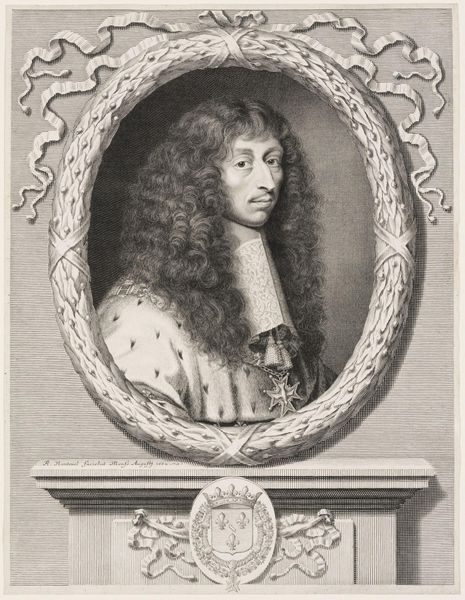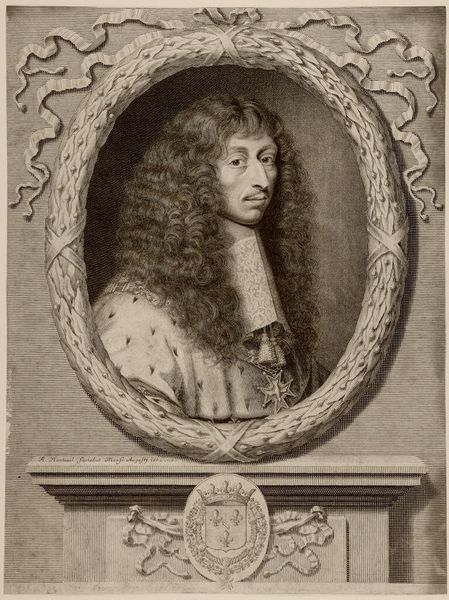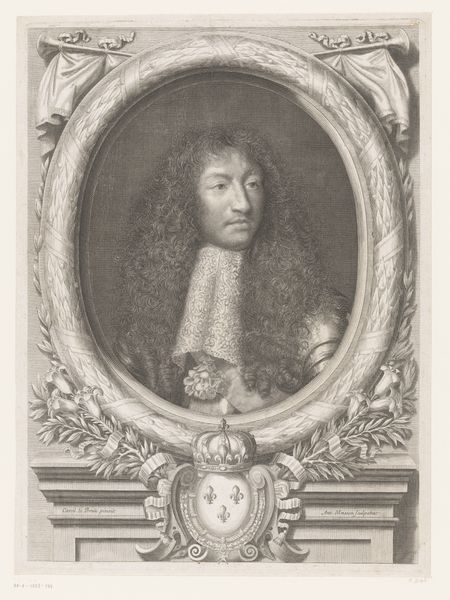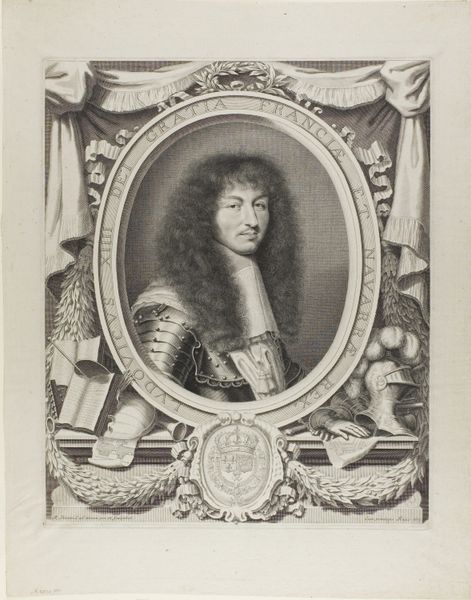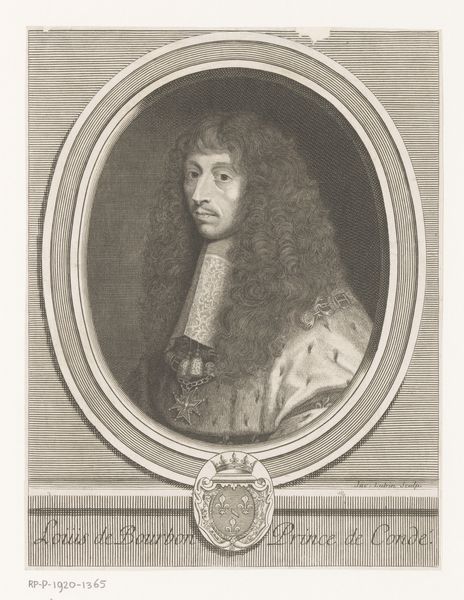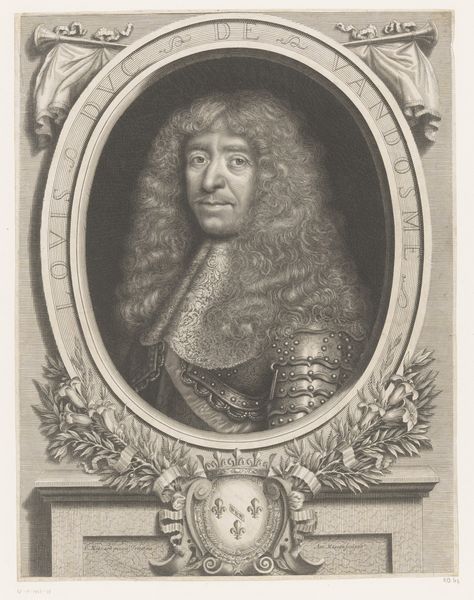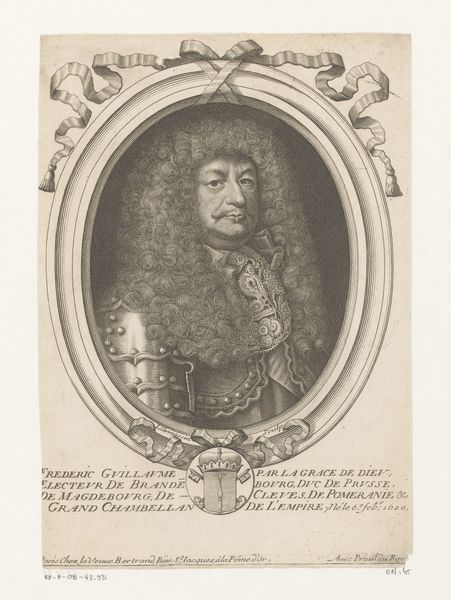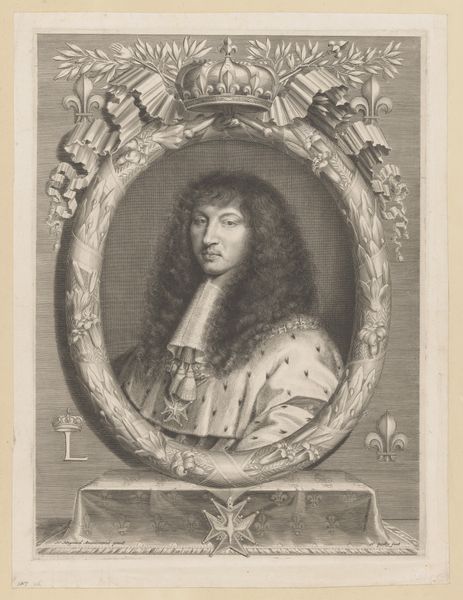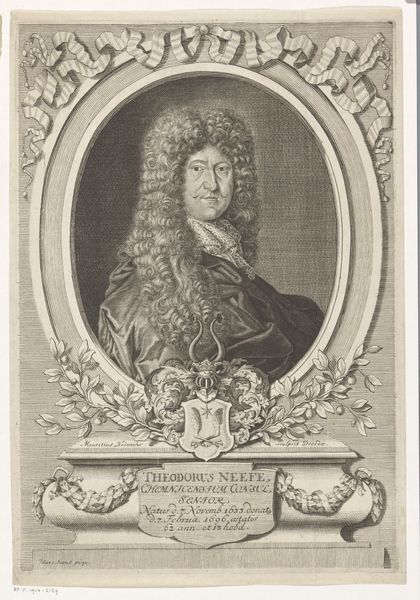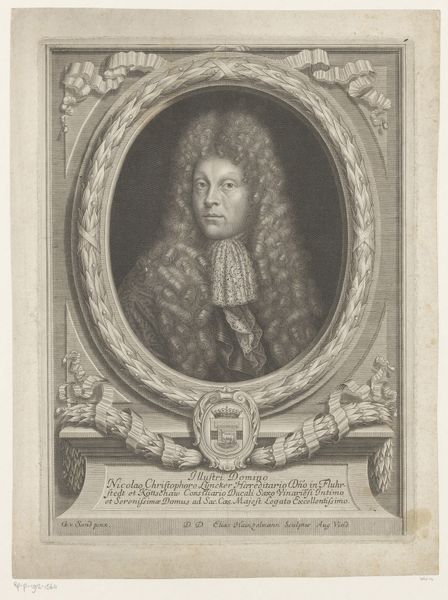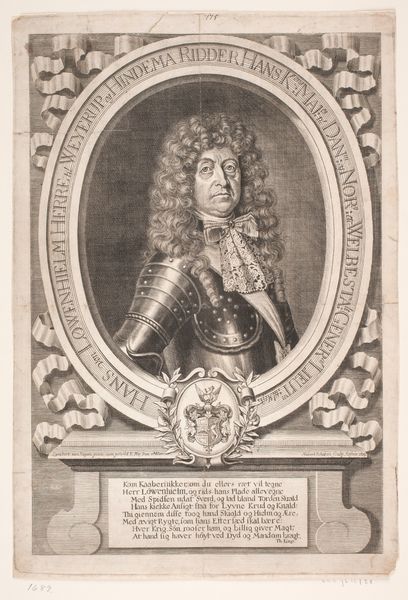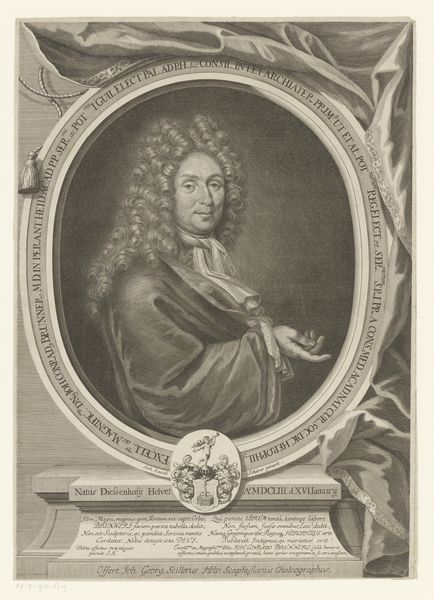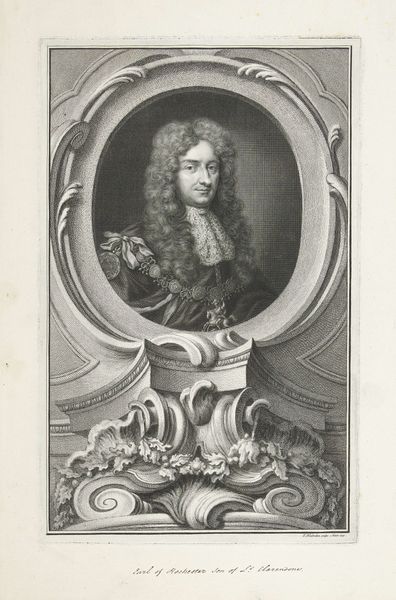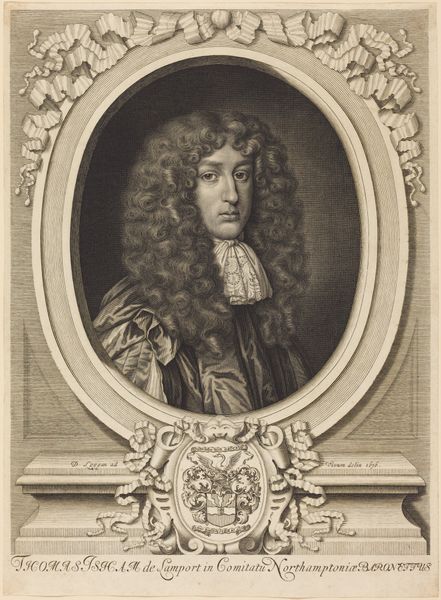
drawing, print, engraving
#
portrait
#
drawing
#
baroque
# print
#
history-painting
#
engraving
Dimensions: Sheet: 13 7/8 × 10 5/8 in. (35.2 × 27 cm)
Copyright: Public Domain
Editor: Here we have Robert Nanteuil’s engraving, "Louis II de Bourbon, Prince de Condé," from 1662. It strikes me as incredibly ornate, especially the framing elements. How should we interpret a piece like this from a materialist perspective? Curator: Focus on the engraving process itself. Nanteuil’s skill transformed copper into a matrix for reproducing this image. Think about the social implications: How did this process democratize portraiture? These prints circulated widely, shaping public perceptions of power and nobility. Editor: So, it’s not just about the Prince, but also about how the image reached people? Curator: Precisely. The act of engraving, the labor involved, and the subsequent distribution of the print become crucial. Consider the materials themselves – the ink, the paper – and how their relatively accessibility facilitated wider dissemination compared to, say, an oil painting available only to the elite. The printing press became an instrument, changing social dynamics, where skilled artisans like Nanteuil wielded the instrument, thus popularizing and standardizing ideals, influencing what society admired. Editor: It's interesting how focusing on the 'stuff' of it reveals so much about its historical impact. Were there many like Nanteuil making these prints at this time? Curator: Absolutely. A whole industry thrived on creating and distributing these kinds of images. Think about workshops, apprenticeships, trade routes for materials... Editor: That really shifts my perspective! I hadn't considered the artistic labor and materials as being so important. Curator: By investigating materials and the production process we recognize the image isn't merely a depiction, it embodies social and economic forces. It provides invaluable insight into art of this era.
Comments
No comments
Be the first to comment and join the conversation on the ultimate creative platform.
